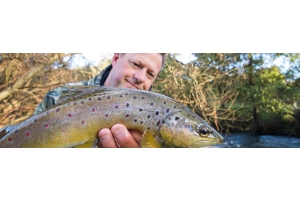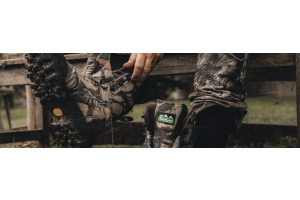
How to wash camo clothing
Your camouflage clothing will help you stay hidden on your hunts, but unfortunately it will get dirty just like any other clothes. Proper cleaning will extend your camo clothing’s lifetime and performance. Here’s how to keep your camo clothing in top-notch condition, so it can keep adding to the success of your hunts!
How important is cleaning?
Very! There are 3 main reasons to properly wash your camo clothing:
- Nobody likes to stink like B.O. and blood!
- Impurities like sweat, body oil, dirt and blood block fabric micropores that you need to keep clear for sweat-wicking performance. These tiny holes are what allow sweat vapours to pass through, keeping you dry.
- If your clothing is waterproof, impurities can grow bacteria, which can destroy the bonds between the main fabric and its waterproof membranes and/or seam-sealed tape. The result? Leaks!
How often should I wash?
As often as necessary. This generally means if your camo clothing looks dirty, smells bad, or
feels damp and clammy. In addition, we recommend washing after 10-12 days of use to preserve
fabric performance.
How do I properly wash?
Camo clothing is often built with outdoor apparel fabrics that are tougher and sturdier than regular clothing. This is great for durability and (depending on the garment) waterproofing, but it means you should take extra care when giving them a wash.
First, secure your garment properly. That means closing zips, fastening pockets if they are zipped or buttoned, and securing extra flaps and straps. Next, check the clothing’s care instructions to know whether you should hand wash or gentle machine wash.
Pro-tip: DON’T add powder detergents, stain removers, bleach, conditioners or fabric softeners! These will all clog high performance camo clothing’s micropores, and/or damage their fabrics. Instead, use a specialist gear care brand like Grangers, NikWax, STORM or Gear Aid. These cleansers are optimised for sports, outdoor and hunting fabrics. Ridgeline | 500 word blog article.
Which cleaning product should I choose?
That depends on what fabric your camo clothing is made from.
- Baselayers (cotton, polyester, merino, etc.) - for tee-shirts, thermals, or other clothing that touches your skin, use Granger’s Active Wash or NikWax BaseFresh. If your baselayer is made entirely from merino or wool, consider STORM Merino and Wool Cleaner.
- Fleece - use Granger’s Performance Wash or NikWax Tech Wash.
- Down - for down-filled jackets, vests and even sleeping bags, use Granger’s Down Wash, Gear Aid ReviveX Down Cleaner, STORM Down Cleaner or NikWax Down Wash Direct to keep your down lofty and warm.
- Waterproof fabric (e.g. GORE-TEX, waxed cotton) - use Granger’s Performance Wash, Gear Aid ReviveX Pro Cleaner, STORM Clothing Cleaner, or NikWax Tech Wash.
How should I dry my camo clothes?
Generally, it’s best to let technical clothing air dry. Spread them over a clothes drying rack or clotheshorse and leave them be! You can hang jackets and shirts on a clothes hanger before popping them on the rack to prevent annoying creases.
However, if your gear is marked DWR or waterproof, you might want to replenish its water resistance properties. Read on below if so!
Is your gear waterproof?
Time, hard wear and washing can all diminish your camo clothing’s waterproofing effectiveness. Don’t worry, though, it’s easy to revitalise. Waterproof treatments can be reactivated in two ways:
- Heat - If the care label allows you to, allow your waterproof garment to completely air dry, then tumble dry on a gentle, warm cycle for 20 minutes. Otherwise, place a towel between the garment and an iron, then iron the dry garment on a gentle (warm, no steam) setting.
- Specialist waterproofing treatment - Granger’s, NikWax, STORM and Gear Aid all produce highly effective wash-in and spray-on waterproofers. Make sure to properly wash your clothes before treating them.






